Suggest a new Definition
Proposed definitions will be considered for inclusion in the Economictimes.com
Economy
What is 'Demand'
Demand
Market prices are determined via demand and supply. If the demand for a product is more than the supply, the prices seem to go up. If the supply of the product is more than the demand, the prices go down. This simple economic principle is easy to understand, but what is the definition of demand is something to ponder.
What is Demand?
Demand is a principle of economics that captures the consumer's desire to buy the product or service. The demand is calculated as the price the consumers are willing to pay for the product or service. If we keep all other factors constant, the demand should go up as the prices go down, and the demand should go down as the prices go up.
This simple principle keeps the market in equilibrium. Market and aggregate demand are used to understand the demand for goods and services.
Consumers want to pay the least amount for the products or services. The suppliers, on the other hand, want to maximize the return. Thus, the point of intersection of the demand and supply determines the price of the product or service.
Factors responsible for demand
Various factors can affect the demand for a particular good or service. Some important demand factors are:-
Supply and demand factors for the product depend on general and specific factors. The total of the factors is summed up, and the demand and supply can be plotted on a graph. The demand and supply curves have the price on the Y-Axis and the supply or demand on the X-Axis.
The demand curve is a downward-sloping curve. As the price goes up, the demand goes down. Similarly, the supply curve is an upward sloping curve. As the price goes up, the supply goes up. Thus, the demand and supply can be plotted on a graph as a function of a price considering all other factors remaining constant.
Market Equilibrium
The market equilibrium is formed at the point where the demand and supply curves intersect. The intersection price is the market price of the product or service. Factors affecting demand and supply are ever-changing. Thus, the state of equilibrium does not exist in real life, and the demand and supply keep changing.
Free markets tend to find the correct price for a product or service. This process is called price discovery. The price, as determined by the intersection of demand and supply, forms the market price of the goods.
Market Demand Vs Aggregate Demand
Market demand is the demand in the market for particular goods and services. As the market demand checks the particular goods and services, factors like competitive products can affect the market demand.
Aggregate demand is the demand for all products and services in an economy. As competing products should not limit the demand for all goods and services, aggregate demand is based on just the economic factors and not the individual ones.
Macroeconomic Policy and Demand
The policy of the central banks can affect the aggregate or macroeconomic demand. Macroeconomic demand refers to aggregate demand. When the aggregate demand in the economy is high, and the inflation is soaring, the central banks increase the interest rates to reduce the aggregate demand.
Similarly, if the aggregate demand in the economy is low, the central banks pump money into the markets and undertake interest rate reductions to increase the demand. Thus central bank policy is more demand-related and is based on demand-side factors.
In some cases, the central banks can’t increase the aggregate demand. This usually happens when the unemployment rate is high and the economy is in a recession. In the case of high unemployment, the demand is low even with low-interest rates, as the demand for debt is low because of job uncertainty.
What are aggregate demand and market demand?
Market demand is the demand in the market for particular goods and services. As the market demand checks the particular goods and services, factors like competitive products can affect the market demand.
Aggregate demand is the demand for all products and services in an economy. As competing products should not limit the demand for all goods and services, aggregate demand is based on just the economic factors and not the individual ones.
Is the demand curve sloping downward?
The demand curve is made by plotting the price on the Y-Axis and the demand on the X-Axis. The demand curve slopes down. When prices go up, demand goes down and vice-versa.
What is equilibrium price?
Equilibrium price is the market price as the demand and supply meet at the equilibrium price. The equilibrium price is ever-changing, and the demand and supply factors keep changing. As the factors change, the equilibrium price changes as well.
Disclaimer: This content is authored by an external agency. The views expressed here are that of the respective authors/ entities and do not represent the views of Economic Times (ET). ET does not guarantee, vouch for or endorse any of its contents nor is responsible for them in any manner whatsoever. Please take all steps necessary to ascertain that any information and content provided is correct, updated and verified. ET hereby disclaims any and all warranties, express or implied, relating to the report and any content therein.
Market prices are determined via demand and supply. If the demand for a product is more than the supply, the prices seem to go up. If the supply of the product is more than the demand, the prices go down. This simple economic principle is easy to understand, but what is the definition of demand is something to ponder.
What is Demand?
Demand is a principle of economics that captures the consumer's desire to buy the product or service. The demand is calculated as the price the consumers are willing to pay for the product or service. If we keep all other factors constant, the demand should go up as the prices go down, and the demand should go down as the prices go up.
This simple principle keeps the market in equilibrium. Market and aggregate demand are used to understand the demand for goods and services.
- Demand is the consumer’s desire to purchase a particular good or service.
- Market demand is the demand for a particular good in the market.
- Aggregate demand is the total demand for goods and services in the economy.
- Demand and supply match determines the price of the good or service.
- Understanding the concept of demand.
Consumers want to pay the least amount for the products or services. The suppliers, on the other hand, want to maximize the return. Thus, the point of intersection of the demand and supply determines the price of the product or service.
Factors responsible for demand
Various factors can affect the demand for a particular good or service. Some important demand factors are:-
- The appeal of the product or service to the buyer.
- Availability of competing products or services.
- Financing rate of interest and availability.
- Availability and also the perceived availability of the good or service.Thus, the demand for the products or services is based on these factors.
Supply and demand factors for the product depend on general and specific factors. The total of the factors is summed up, and the demand and supply can be plotted on a graph. The demand and supply curves have the price on the Y-Axis and the supply or demand on the X-Axis.
The demand curve is a downward-sloping curve. As the price goes up, the demand goes down. Similarly, the supply curve is an upward sloping curve. As the price goes up, the supply goes up. Thus, the demand and supply can be plotted on a graph as a function of a price considering all other factors remaining constant.
Market Equilibrium
The market equilibrium is formed at the point where the demand and supply curves intersect. The intersection price is the market price of the product or service. Factors affecting demand and supply are ever-changing. Thus, the state of equilibrium does not exist in real life, and the demand and supply keep changing.
Free markets tend to find the correct price for a product or service. This process is called price discovery. The price, as determined by the intersection of demand and supply, forms the market price of the goods.
Market Demand Vs Aggregate Demand
Market demand is the demand in the market for particular goods and services. As the market demand checks the particular goods and services, factors like competitive products can affect the market demand.
Aggregate demand is the demand for all products and services in an economy. As competing products should not limit the demand for all goods and services, aggregate demand is based on just the economic factors and not the individual ones.
Macroeconomic Policy and Demand
The policy of the central banks can affect the aggregate or macroeconomic demand. Macroeconomic demand refers to aggregate demand. When the aggregate demand in the economy is high, and the inflation is soaring, the central banks increase the interest rates to reduce the aggregate demand.
Similarly, if the aggregate demand in the economy is low, the central banks pump money into the markets and undertake interest rate reductions to increase the demand. Thus central bank policy is more demand-related and is based on demand-side factors.
In some cases, the central banks can’t increase the aggregate demand. This usually happens when the unemployment rate is high and the economy is in a recession. In the case of high unemployment, the demand is low even with low-interest rates, as the demand for debt is low because of job uncertainty.
What are aggregate demand and market demand?
Market demand is the demand in the market for particular goods and services. As the market demand checks the particular goods and services, factors like competitive products can affect the market demand.
Aggregate demand is the demand for all products and services in an economy. As competing products should not limit the demand for all goods and services, aggregate demand is based on just the economic factors and not the individual ones.
Is the demand curve sloping downward?
The demand curve is made by plotting the price on the Y-Axis and the demand on the X-Axis. The demand curve slopes down. When prices go up, demand goes down and vice-versa.
What is equilibrium price?
Equilibrium price is the market price as the demand and supply meet at the equilibrium price. The equilibrium price is ever-changing, and the demand and supply factors keep changing. As the factors change, the equilibrium price changes as well.
Disclaimer: This content is authored by an external agency. The views expressed here are that of the respective authors/ entities and do not represent the views of Economic Times (ET). ET does not guarantee, vouch for or endorse any of its contents nor is responsible for them in any manner whatsoever. Please take all steps necessary to ascertain that any information and content provided is correct, updated and verified. ET hereby disclaims any and all warranties, express or implied, relating to the report and any content therein.
Related News
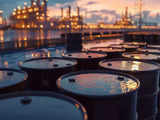 Oil prices steady amid falling US inventories, weak dollarOil prices rise on Wednesday, a day after benchmark Brent hit a one-month low, as a decline in U.S. oil stockpiles and a weaker dollar overshadowed signs of weakening demand in China.
Oil prices steady amid falling US inventories, weak dollarOil prices rise on Wednesday, a day after benchmark Brent hit a one-month low, as a decline in U.S. oil stockpiles and a weaker dollar overshadowed signs of weakening demand in China. Oil prices gain 1% on big US storage withdrawal, weaker US dollarBy 10:34 a.m. EDT (1434 GMT), Brent futures increased by 96 cents, or 1.2%, reaching $84.69 per barrel, while U.S. West Texas Intermediate (WTI) crude rose by $1.36, or 1.7%, to $82.12 per barrel. On Tuesday, Brent closed at its lowest level since June 14, and WTI at its lowest since June 21.
Oil prices gain 1% on big US storage withdrawal, weaker US dollarBy 10:34 a.m. EDT (1434 GMT), Brent futures increased by 96 cents, or 1.2%, reaching $84.69 per barrel, while U.S. West Texas Intermediate (WTI) crude rose by $1.36, or 1.7%, to $82.12 per barrel. On Tuesday, Brent closed at its lowest level since June 14, and WTI at its lowest since June 21. Asian Paints profit slips by a fourth, margins down 400 basis pointsAsian Paints saw its profit slip by nearly a fourth on year in the June quarter as a subdued demand environment, price cuts taken in the previous quarter and a shift in product mix weighed on earnings.
Asian Paints profit slips by a fourth, margins down 400 basis pointsAsian Paints saw its profit slip by nearly a fourth on year in the June quarter as a subdued demand environment, price cuts taken in the previous quarter and a shift in product mix weighed on earnings. Cement companies likely to post muted performance in Q1 amid sluggish demandCement makers have not been able to raise prices in any of the months since November 2023. It has prompted them to focus on volume growth, which is likely to increase the competitive intensity.
Cement companies likely to post muted performance in Q1 amid sluggish demandCement makers have not been able to raise prices in any of the months since November 2023. It has prompted them to focus on volume growth, which is likely to increase the competitive intensity.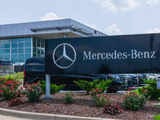 Mercedes-Benz mulls assembling more EVs in India to meet zero emission, carbon neutrality goalsMercedes-Benz is considering assembling more electric vehicles at its plant in India. This move aims not only to reduce costs but also to advance the company’s goals of zero emission mobility and a carbon neutral setup. Mercedes-Benz India already assembles its flagship electric luxury sedan EQS at the Chakan unit and is evaluating the localisation of other models based on demand.
Mercedes-Benz mulls assembling more EVs in India to meet zero emission, carbon neutrality goalsMercedes-Benz is considering assembling more electric vehicles at its plant in India. This move aims not only to reduce costs but also to advance the company’s goals of zero emission mobility and a carbon neutral setup. Mercedes-Benz India already assembles its flagship electric luxury sedan EQS at the Chakan unit and is evaluating the localisation of other models based on demand. Wage hikes-demand slowdown combo weighs on TCS first quarter net profitTCS reported a 3.16% net profit drop to ₹12,040 crore in June due to wage hikes and macroeconomic uncertainties. Revenue increased to ₹62,613 crore, driven by a ₹15,000 crore BSNL deal. CEO Krithivasan noted geopolitical issues. AI, Cloud, IoT grew; $8.3 billion deal pipeline. Added 5,452 employees; 24.7% margin. GenAI pipeline at $1.5 billion; India business jumped 61.8%.
Wage hikes-demand slowdown combo weighs on TCS first quarter net profitTCS reported a 3.16% net profit drop to ₹12,040 crore in June due to wage hikes and macroeconomic uncertainties. Revenue increased to ₹62,613 crore, driven by a ₹15,000 crore BSNL deal. CEO Krithivasan noted geopolitical issues. AI, Cloud, IoT grew; $8.3 billion deal pipeline. Added 5,452 employees; 24.7% margin. GenAI pipeline at $1.5 billion; India business jumped 61.8%.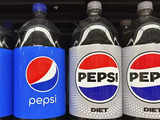 PepsiCo quarterly revenue misses estimates as demand slows for snacks, sodas; shares drop over 3%Analysts note that while product prices are normalizing after nearly two years of increases, they remain higher than pre-pandemic levels. This leaves packaged-food companies like PepsiCo with limited pricing power as volumes decrease. PepsiCo raised average prices by 5% for the quarter ending June 15, consistent with the first quarter, but overall organic volumes declined by 3% during the period.
PepsiCo quarterly revenue misses estimates as demand slows for snacks, sodas; shares drop over 3%Analysts note that while product prices are normalizing after nearly two years of increases, they remain higher than pre-pandemic levels. This leaves packaged-food companies like PepsiCo with limited pricing power as volumes decrease. PepsiCo raised average prices by 5% for the quarter ending June 15, consistent with the first quarter, but overall organic volumes declined by 3% during the period.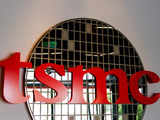 AI frenzy takes Taiwan's TSMC to record peak, puts it in trillion dollar clubThe AI frenzy has sparked a rally in chipmaker stocks across the globe. Taiwan Semiconductor Manufacturing Co (TSMC), the world's largest contract chipmaker, whose customers include AI poster child Nvidia, has especially benefited from the soaring demand for AI-capable chips.
AI frenzy takes Taiwan's TSMC to record peak, puts it in trillion dollar clubThe AI frenzy has sparked a rally in chipmaker stocks across the globe. Taiwan Semiconductor Manufacturing Co (TSMC), the world's largest contract chipmaker, whose customers include AI poster child Nvidia, has especially benefited from the soaring demand for AI-capable chips.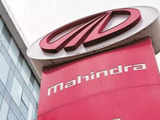 M&M shares fall over 8% after SUV price cutShares of M&M dropped 8.4% following a 10% price cut on XUV700 SUVs, reducing the stock by 6.7% in Nifty. Kotak Securities targets ₹2,950, advising long-term investment. Despite profit booking, analysts foresee no revenue impact, emphasizing a solid order book and growth from February 2024's business strategy execution.
M&M shares fall over 8% after SUV price cutShares of M&M dropped 8.4% following a 10% price cut on XUV700 SUVs, reducing the stock by 6.7% in Nifty. Kotak Securities targets ₹2,950, advising long-term investment. Despite profit booking, analysts foresee no revenue impact, emphasizing a solid order book and growth from February 2024's business strategy execution.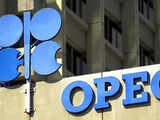 Oil steadies as OPEC keeps demand forecasts unchangedOil prices steadied on Wednesday as the Organization of the Petroleum Exporting Countries (OPEC) kept its growth forecast for oil demand unchanged for this year and next, while U.S. crude and gasoline inventories likely fell last week.
Oil steadies as OPEC keeps demand forecasts unchangedOil prices steadied on Wednesday as the Organization of the Petroleum Exporting Countries (OPEC) kept its growth forecast for oil demand unchanged for this year and next, while U.S. crude and gasoline inventories likely fell last week.
Load More